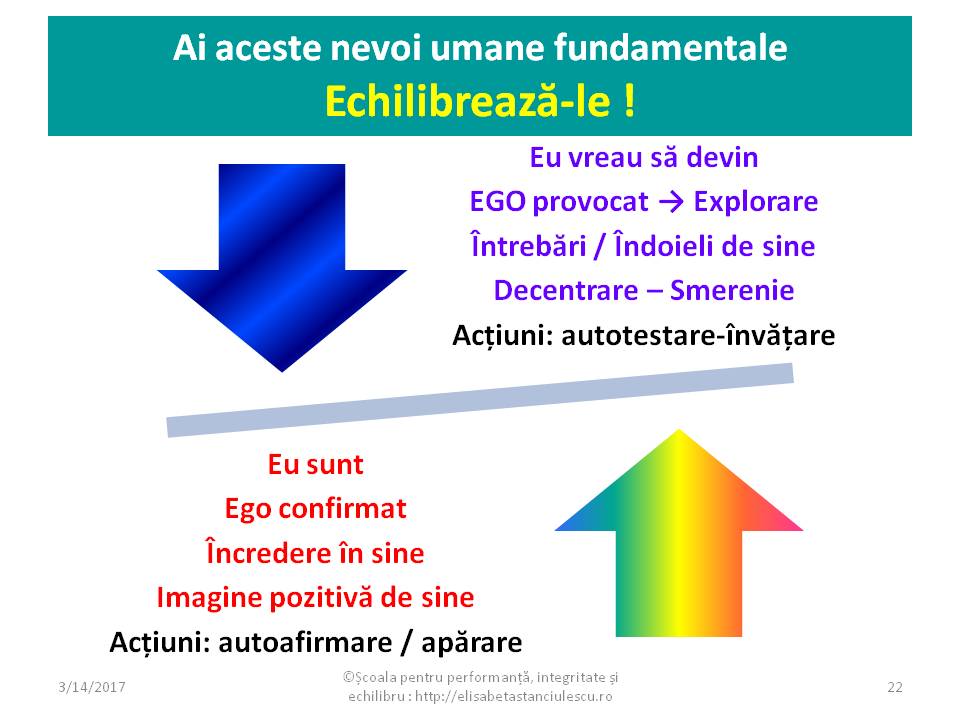Creativitate, gândire critică și evaluare formativă
02.04.2013
Superbă această pledoarie OECD pentru creativitate și evaluare formativă în școală!
Cinci dimensiuni ale creativității / evaluării:
- interogație (curiozitate + căutare + gândire critică);
- perseverență;
- imaginație;
- cooperare;
- disciplină.
”The five dispositions on which we decided to focus were arrived at after careful weighing up of the
pros and cons of existing lists of creative dispositions in the light of our criteria. Our model explored the
following five core dispositions of the creative mind:
1. Inquisitive. Clearly creative individuals are good at uncovering and pursing interesting and
worthwhile questions in their creative domain.
− Wondering and questioning – beyond simply being curious about things, the questioning
individual poses concrete questions about things. This enables him, and others, to think
things through and develop new ideas.
− Exploring and investigating – questioning things alone does not lead to creativity. The
creative individual acts out his curiosity through exploration, and the investigating
individual follows up on her questions by actively going out, seeking, and finding out
more.
− Challenging assumptions – a degree of appropriate scepticism is an important trait of the
creative individual. This means not taking things at face value without critical
examination.
2. Persistent. In line with Thomas Edison’s remark above, this section has been repeatedly
emphasized.
− Sticking with difficulty – persistence in the form of tenacity is an important habit of mind
enabling an individual to get beyond familiar ideas and come up with new ones.
− Daring to be different – creativity demands a certain level of self-confidence as a prerequisite
for sensible risk-taking as well as toleration of uncertainty.
− Tolerating uncertainty – being able to tolerate uncertainty is important if an individual is
going to move ‘off of the starting blocks’ on a project or task where actions or even goals
are not fully set out.
3. Imaginative. At the heart of a wide range of analyses of the creative personality is the ability to
come up with imaginative solutions and possibilities.
− Playing with possibilities – developing an idea involves manipulating it, trying it out,
improving it.
− Making connections – this process of synthesising brings together a new amalgam of
disparate things.
− Using intuition – the use of intuition allows individuals to make new connections and arise
at thoughts and ideas that would not necessarily materialise given analytical thinking
alone.
4. Collaborative. Many current approaches to creativity, such as that of John-Steiner (2006), stress
the social and collaborative nature of the creative process.
− Sharing the product – this is about the creative output itself impacting beyond its creator.
− Giving and receiving feedback – this is the propensity to want to contribute to the ideas of
others, and to hear how one’s own ideas might be improved.
− Cooperating appropriately – the creative individual co-operates appropriately with others.
This means working collaboratively as needed, not necessarily all the time.
5. Disciplined. As a counterbalance to the ‘dreamy’, imaginative side of creativity, there is a need
for knowledge and craft in shaping the creative product and in developing expertise.
− Developing techniques – skills may be established or novel but the creative individual will
practise in order to improve. This is about devoting time to a creative endeavour.
− Reflecting critically – once ideas have been generated, evaluation is important. We could
call this ‘converging’. It requires decision-making skills.
− Crafting and improving – this relates to a sense of taking pride in one’s work. The
individual pays attention to detail, corrects errors, and makes sure the finished article
works perfectly, as it should.”
Ce distanță față de mitul creativității individuale, complet ”libere” și bazată doar pe ”inspirație”, în care cred conaționalii nostri !
Citiți neapărat!
Însă, dacă sunteți cadru didactic și încercați să aplicați, pregătiți-vă să faceți față presiunilor elevilor / studenților, altor colegi și părinților, de la care riscați să auziți, cum auzeam eu când foloseam un sistem de evaluare formativ, axat pe competențe transferabile, gândire critică și creativitate: ”Dacă reproducem materia, nu e bine; dacă scriem cu cuvintele noastre (complet ”liber”, adică), iar nu e bine”.
.

Ma intereseaza opinia ta, scrie un comentariu
You must be logged in to post a comment.